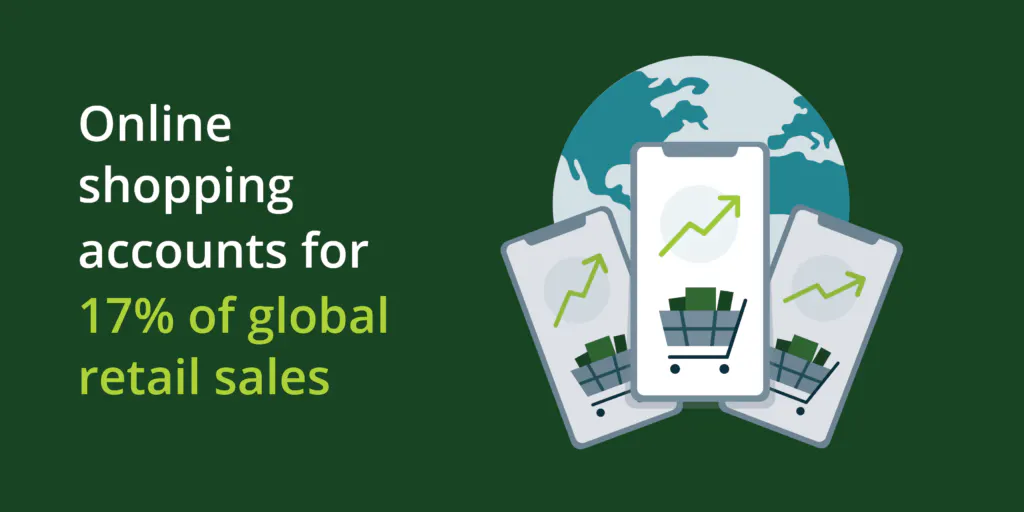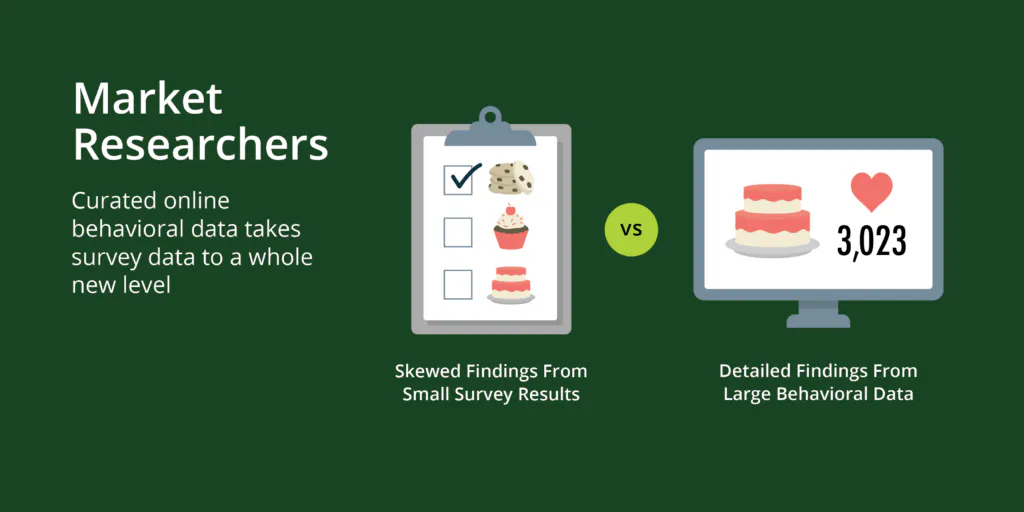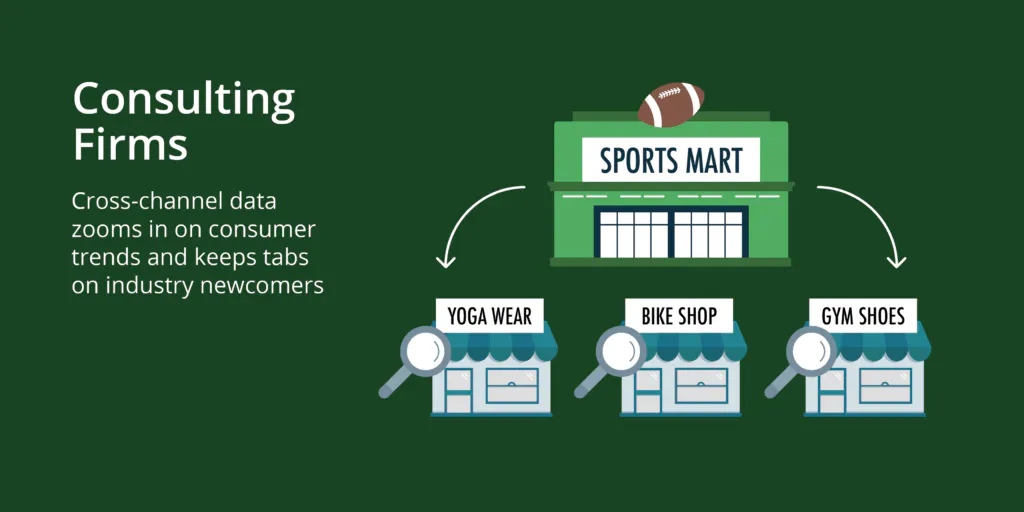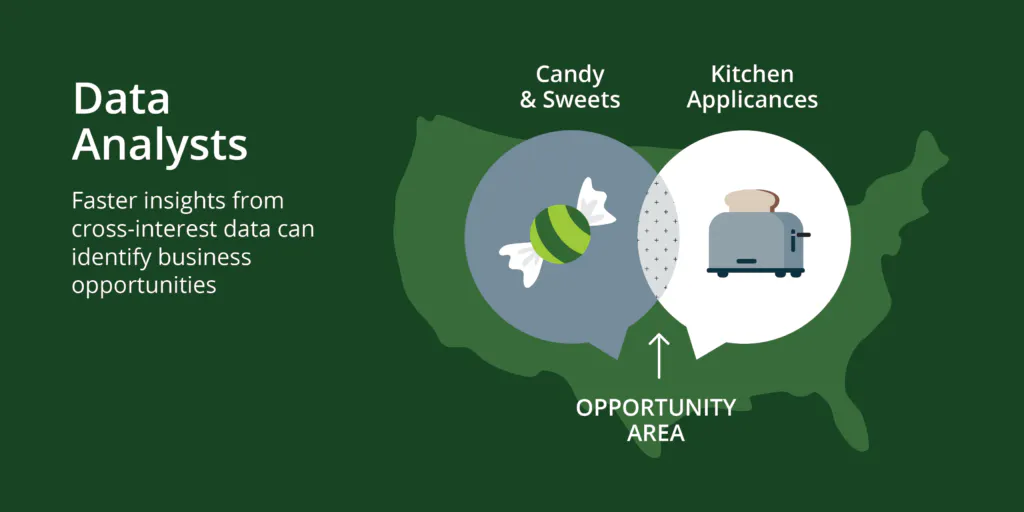After the struggles of 2020 and 2021, 2022 appears to hold a silver lining for the beleaguered consumer packaged goods (CPG) industry. In spite of continuing shipping and logistic challenges—along with rising inflation—experts point to a 3.3% growth in retail with sales exceeding 2019 levels.
Even so, online shopping is here to stay and accounts for 17% of global retail sales according to IRI’s Consumer Goods and Retail in 2022 report. That translates into a CPG data boom—for marketers who know how to take advantage of it.
Real-time behavioral data, such as views, clicks, and shares, provides faster insights and adds context to where consumers are in their path to purchase. It discerns which consumers are high and light users, allowing marketers to power confident strategy recommendations.
All this delivers information you can use to identify new potential customers and improve products and services. For key players in the CPG industry—particularly market research, consulting firms and data analysts—there’s no better time to put customer behavior analytics to work than now.
Curated behavioral data augments the critical work happening every day to enable industry growth and expand knowledge boundaries, deepening the power of existing research methods and problem-solving methodologies. Let’s take a closer look at some of the core challenges curated behavioral data can help address.
Market Researchers
Putting the consumer at the center of everything—from creating and selling a new product to creating models that accurately forecast unit sales—depends on market research. Research depends on data and making sense of it in ways that drive action. Putting that picture together fast enough and with high degrees of accuracy is essential.
Curated Behavioral Data Takes Survey Data to a Whole New Level
Imagine freeing your firm from surveys as primary data sources in favor of highly relevant, ongoing interactions that reveal what consumers think at different points in the purchase journey, enriching not only the breadth of conclusions, but also their depth and specificity. That makes them dramatically more actionable and valuable for brand and retailer clients.
Even the best designed surveys can yield results that lead to skewed findings with invisible ramifications. But what if you could deepen the context of what you already know using online consumer behavioral data—to predict, say, the most trending baked good? After all, for many of us, our favorite treats can change within the hour.
How much more accurate could predictions be if those answers were considered in the context of actual online behaviors over a 30-day period? More interestingly, how much more personalized would a campaign be if market research findings provided an indexable confidence score that the trend for apple turnovers in New York is well above national average, but trending with only slight enthusiasm in Los Angeles? And that’s just the tip of the iceberg of what’s possible.
Consulting Firms
With global shipping—as well as consumer work, lifestyle, and shopping patterns—turned completely upside-down, many firms have had to reconsider how to interpret their data to offer clients the most relevant recommendations in a volatile environment. It can be extremely challenging to accurately interpret data at an industry level, with enough granularity on the consumer level, to nail the context. Luckily, data-driven predictive analytics can play a critical role.
Real-Time Behavioral Data Zooms In on Consumer Trends for Broader Cross-Channel Context
Advancing data science makes it possible to apply enhancements and filters to very large datasets and then curate them to view macro and micro patterns. Because ShareThis Data Feed curates only relevant intent signals, firms can achieve speed and scale, distinguishing not only high and light internet users but also duration-specific sentiments toward topics and brands. That delivers increasing confidence around where to invest precious marketing dollars.
For example, a brand or retailer client may have a historic advantage in consumer sentiment when compared with competitors, based on customer feedback responses and return rates. None of which may consider industry newcomers or the local impact of intermittent shipping challenges, but all of which can affect brand sentiment. That’s a blind spot, not just for the brand or retailer, but for the consulting teams.
By including curated online behavioral data in analyses, firms can assess overall business factors, identify looming threats and take advantage of new opportunities. They can also achieve faster CPG data insights, giving clients a true competitive edge in a highly unpredictable operating environment.
Data Analysts
Tasked to eliminate guesswork and provide 360-degree views of customers, data analyst firms can find themselves hard-pressed to constantly collect and analyze new data fast enough as conditions change. But there’s no question that campaign effectiveness and many aspects of customer experience—from creative and messaging to targeting and personalization—rely squarely on their shoulders.
Adding Near-Real Time Signals Can Lighten the Load and Improve Results
Improving the currency and breadth of datasets with curated online consumer behavior data can reveal how buyers change their purchase behavior and decisions. This can help reduce the levels of unpredictability many CPG brands and retailers are experiencing.
ShareThis Data Feed intent signals are derived using advanced natural language processing (NLP) and machine learning technologies to extract contextual meaning from web content, while at the same time, determining attitudes toward topics, products and brands.
One of the most useful aspects is cross-retail and cross-interest data coverage. This view of consumer behavior is increasingly more challenging to come by, given the phasing out of third-party cookies. Curated online behavioral data can address these data gaps and help firms deliver broader context to reveal unexpected patterns.
For example, cross-interest and keyword-rich data can reveal where to find new customers as well as better personalize consumer journeys. You might find, for example, that a higher than national average of Candy & Sweets customers are also highly interested in Small Kitchen Appliances, especially in Chicago and Houston when compared to New York or Denver. That opens the door for recommending new cross-promotion and incentive possibilities.
ShareThis Curated Data Feed Is Tailored Entirely to Your Business Needs
While challenges remain, 2022 promises growth for the consumer packaged goods (CPG) industry, especially with today’s unparalleled boom in online data. Datasets that deliver context and actionable steps will ultimately be the golden ticket for driving real performance and results.
With ShareThis Data Feed, you can receive hand selected proprietary attributes (matched using a wide range of ID options) that are filtered by geo location, keywords, domains, etc. based on your business use-case—only the most relevant and actionable data, none of the rest.
If you’re not already leveraging online behavioral data to power better customer experiences, optimal marketing campaigns, and faster business growth, you might be a few steps behind.








